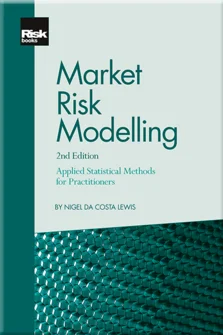Practical Principal Components Analysis
Preface
Risk Modelling and its Myths
Mastering the R Statistical Package
Key Concepts on Probability
Tools for Describing Risk Factors and Portfolios
The Essentials of Hypothesis Testing for Risk Managers
Alternative Methods to Measure Correlation
A Primer On Maximum Likelihood Estimation
Regression in a Nutshell
Fitting Probability Distributions to Data
Practical Principal Components Analysis
Three Essential Models for Volatility
Random Numbers and Applied Simulation
Tail Risk Modelling
Conclusion to 'Market Risk Modelling (2nd edition)'
Principal components analysis (PCA) is a method of transforming a given set of risk factor variables into a new set of composite variables. These new variables are uncorrelated to each other and account for the entire variance in the original data. In risk modelling practice, it is often found much fewer principal components than the number of original variables are sufficient to summarise the variability in the data. The objective of PCA is to take p random variables, X1, X2, …, Xp, on which we have N measurements, and find linear combinations of these to produce a new set of variables, Z1, Z2, …, Zp, that are uncorrelated with each other – ie, correlation (Zi, Zj) = 0∀i ≠ j. The lack of correlation is convenient for market risk modelling because it implies each of the are measuring different aspects of the data. The Zi s are known as the principal components. The principal components are ordered so that variance (Z1) > variance (Z2) > … > variance (Zp). Therefore, Z1 explains the largest amout of variation, followed by Z2and so on. It is hoped that, by carrying out PCA on financial risk factors, the variances on most of the principal components are negligible. If so, the
Copyright Infopro Digital Limited. All rights reserved.
As outlined in our terms and conditions, https://www.infopro-digital.com/terms-and-conditions/subscriptions/ (point 2.4), printing is limited to a single copy.
If you would like to purchase additional rights please email info@risk.net
Copyright Infopro Digital Limited. All rights reserved.
You may share this content using our article tools. As outlined in our terms and conditions, https://www.infopro-digital.com/terms-and-conditions/subscriptions/ (clause 2.4), an Authorised User may only make one copy of the materials for their own personal use. You must also comply with the restrictions in clause 2.5.
If you would like to purchase additional rights please email info@risk.net











